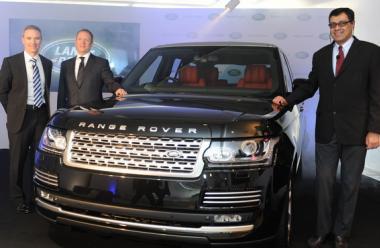I’ve been to India three times already this year – and visited, at various times, Delhi, Kolkata, Mumbai and Bangalore. I had some fascinating meetings with some great companies – and one of the first questions asked is about foreign brands that are succeeding in India.
I believe Australians used to refer to this as the “cultural cringe” – the bizarre idea that branding is something that “other” countries do. The temptation to refer to the consumer products divisions of a company like Godrej or Tata as the “Indian” Unilever, ignoring the fact that they are very successful businesses in their own right. For decades, they have been making life difficult in India for Unilever, P&G and Reckitt Benckiser. And let's not forget Hindustan Unilever that was founded in 1931.
Imagine the question about global brands being a bit like a Venn Diagram, containing a circle of brands that succeed in India, a large subset of them being Indian brands and a smaller circle of Indian brands that succeed outside of India (with some overlapping) - as well as another overlapping circle of global brands that succeed in India.
Indian elite
It can be easy to forget how far India has come! For one thing, India is suddenly a wealthy market for global luxury brands. Indians used to travel abroad to buy the sunglasses, or watches or wallets that Burberry or Gucci or Prada could provide. In September 2012, the law changed to allow overseas investment and shared ownership in retail – and where Ikea and Zara are leading the way into India, then Versace and others will follow.
This isn’t just a retail phenomenon. As I sat in the traffic in Delhi, Kolkata and Mumbai last week, it was certainly evident that the Range Rover Evoque is as coveted in those cities as in parts of London – even if the mixture of cars (and motorised rickshaws) around them might be different. What makes that even stranger is that, in effect, this is an Indian company (Tata), buying a British brand (Range Rover) and then selling it to the world (and to India) more effectively than the British had done. Who needs the cultural cringe now?
Global brands selling to the wealthy elite may not seem like much of a start – and for many consumer products from Samsung to Oreos, the attraction is much more to an enormous and growing Indian middle class. Serving their aspirations for household goods and sweet treats is undoubtedly an opportunity – but watching rickshaw drivers downloading short movie clips for 1 rupee (less than 2p) makes it clear that making money for Airtel or Vodafone may be harder at Indian prices.
Mom-and-pop: 2; global brands: 0
The real shift in focus on this last trip was that the questions have started to focus on the global brands that haven’t been successful – which maybe signals a coming-of-age moment. Whilst there is a lot of debate and progress about single-brand retail, it is still true that in multi-brand retail, things don’t seem to have changed. Walmart and Carrefour don’t seem to be in too much of a hurry to move into India – despite the law changing – and it would appear that both Office Depot and Staples are both pulling out of India and closing their local JVs, unable to compete with local mom-and-pop stationary shops that know their customers well and deliver! As an FT journalist put it “mom-and pop: 2; global brands: 0”.
Read more from BrainJuicer.
Newsletter
Enjoy this? Get more.
Our monthly newsletter, The Edit, curates the very best of our latest content including articles, podcasts, video.
Become a member
Not a member yet?
Now it's time for you and your team to get involved. Get access to world-class events, exclusive publications, professional development, partner discounts and the chance to grow your network.

